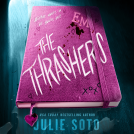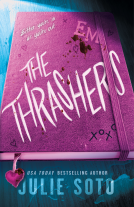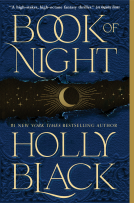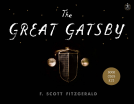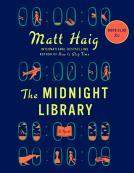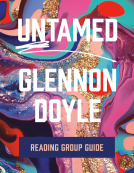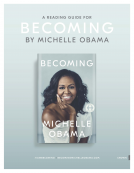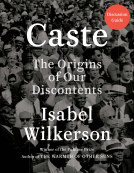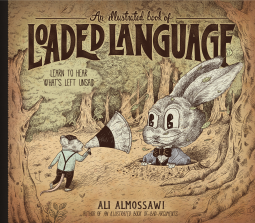
An Illustrated Book of Loaded Language
Learn to Hear What's Left Unsaid
by Ali Almossawi
This title was previously available on NetGalley and is now archived.
Send NetGalley books directly to your Kindle or Kindle app
1
To read on a Kindle or Kindle app, please add kindle@netgalley.com as an approved email address to receive files in your Amazon account. Click here for step-by-step instructions.
2
Also find your Kindle email address within your Amazon account, and enter it here.
Pub Date Nov 09 2021 | Archive Date Nov 23 2021
Talking about this book? Use #IllustratedBookofLoadedLanguage #NetGalley. More hashtag tips!
Description
This file is NOT currently available for Kindle or, due to file-size limitations, on the NetGalley Shelf app. We apologize for any inconvenience. If you have difficulties with downloading, please email us at publicity@theexperimentpublishing.com for assistance or leave a note in lieu of a review rating.
The creators of An Illustrated Book of Bad Arguments return at last with a desperately timely guide to rhetoric
Tens of thousands of demonstrators packed the city’s streets on Friday. The actual count was 250,000. Why tens of thousands, then, and not a quarter million?
The grocer takes woke orders on its brands from a 17-year-old. The nameless 17-year-old’s opinion seems not worth considering. At what age will it be?
Rabbits zapped three badgers in an ambush last night, hours after six rabbits in a neighboring town lost their lives. Were the six rabbits the sole participants in losing their own lives? Those silly rabbits . . .
In this adorably illustrated book, old Mr. Rabbit is your guide to these and many more examples of loaded language. He mines real reporting (by respected and rogue media alike) to unmask rhetoric that shifts blame, erases responsibility, dog-whistles, plays on fear, or rewrites history—subtly or shamelessly. It takes a long pair of ears to hear what’s left unsaid—but when the very notion of truth is at stake, listening for “spin” makes all the difference.
Advance Praise
Praise for An Illustrated Book of Bad Arguments
“A whimsical, straightforward primer . . . a guide to how to strengthen—and how not to weaken—your arguments.”—Shelf Awareness, starred review
"Twitter will be a more civil place.”—BuzzFeed
“Bad arguments, great illustrations . . . gorgeous.”—Cory Doctorow, BoingBoing
Available Editions
| EDITION | Other Format |
| ISBN | 9781615198405 |
| PRICE | $16.95 (USD) |
| PAGES | 96 |
Links
Featured Reviews
 Rex J, Librarian
Rex J, Librarian
An interesting look at an ongoing problem with our information heavy world. I'd say that the level is for teens or older, and could see it being shelved in either the young adult or adult sections of the library. This is quite the good read and I highly recommend it.
This is an excellent guide to the biases and agendas that can slip into our language. Several real-life examples are used, as well as other examples that are couched more obliquely in order to help the reader focus on the substance of the point, instead of their reaction to the subject of the quote.
This is a great, and enjoyable, resource for anyone who would like to become a more discerning consumer of media. We're all susceptible to biases, prejudices, and faults in our thinking and this kind of self-evaluation helps us combat that. This would be a wonderful addition to high school and college libraries and curricula (possibly even middle school for advanced students).
Many thanks to the publisher and NetGalley for the opportunity to read and review!
 Librarian 758128
Librarian 758128
This book is a good overview of how language, especially headlines, tend to skew the world in certain ways, and does a good job of making the reader think about what motive a writer might have for using specific language to describe events.
I was somewhat put off by the way real-life situation and metaphor are mixed. In some situations, real world examples are cited: 'A news station reports that 'some sources' say that masks don't prevent coronavirus', while in others, the rabbit/badger metaphor is used 'Badgers say rabbits are to blame for riots' The fictionalized situations seem to be ones about race, poverty, and war, while real-life ones are about thing like disease, political offices, and climate change. This divide felt strange and incohesive. One might wonder what the author's motivation for making only some situations metaphorical is. Luckily, he's given us a lot of tools to figure that out with.
 Geoff U, Educator
Geoff U, Educator
Not as good as the earlier "An Illustrated Book of bad Arguments," but still full of charming illustrations, still very readable, and still cove3ring important topics. Part of the problem is structural - logical fallacies have a well worked out taxonomy, where bad faith and deceptive arguments and reporting do not. That said, it's important to keep track of the rhetorical techniques that are used to make bad faith persuasion and so this book is great for being so readable and accessible.
 Librarian 784227
Librarian 784227
An Illustrated Book of Loaded Language comprehensively describes many of the cautions librarians try to impress upon their patrons when evaluating information. It outlines the most common methods of persuasion used by writers and how to spot them and be aware of the false confidence and biases they generate. This is also the sort of content that teachers of elementary-aged gifted children love to cover, so would be an excellent resource for those classrooms.
 Librarian 772051
Librarian 772051
I majored in English, and this book was spot on. I was giggling at the examples and the illustrations. I genuinely liked this booked, and I find that it would be a good resource for helping people make informed decisions when it comes to interpreting media. I liked the melding of real world examples with the whimsical animal creations within the book.
 Karen T, Librarian
Karen T, Librarian
An approachable book that can be summed up with “words matter”, but spelled out for the masses that aren’t attuned to the use of language in the media and how it manipulates situations. People in the media often do this in a passive way, downplaying the severity of situations, lest the people become radicalized. Wordplay can at times satisfy the reader or listener that does not want to critically think about what it being said. They can think, “Oh good, this issue will be resolved in a matter of weeks”. Well, that can me anything. Two weeks? Two hundred weeks? Both are a “matter of weeks”.
I paid particular attention to the language of people who want to come across as objective, and the language of neutral people. Neutrality is something that I have little patience for and was glad to see neutral language analyzed in one or two of the sections of this book.
Thanks to Netgalley for the advanced review copy. 4 stars! This book is available to purchase or borrow now.
Readers who liked this book also liked:
Silvia Moreno-Garcia
Historical Fiction, Literary Fiction, Sci Fi & Fantasy

